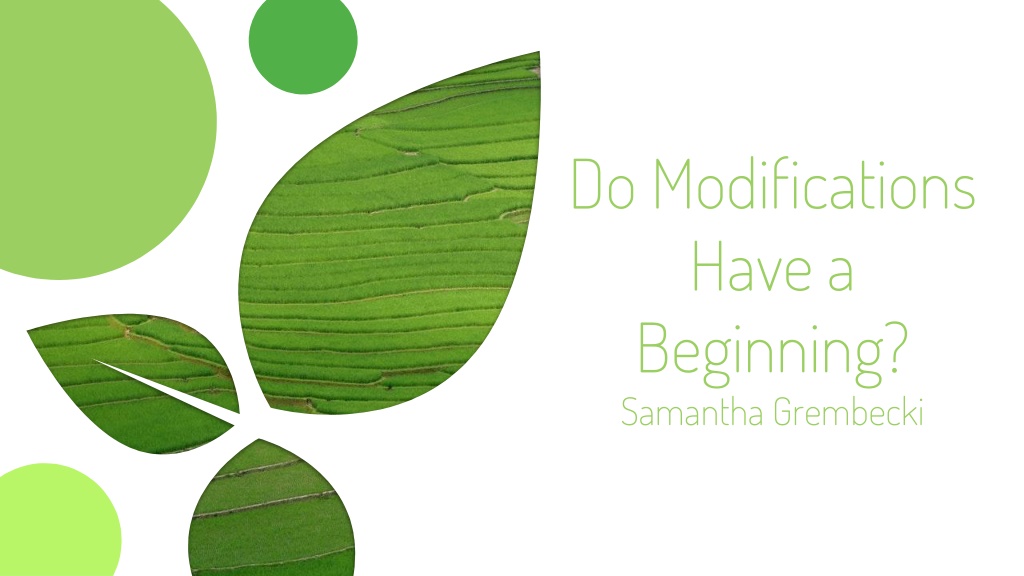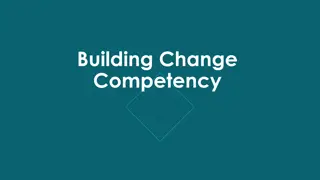Exploring the Continuity of Change
Delve into the concept of continuous change and the absence of a clear beginning or end. Reflect on how Western perspectives may perceive change as segmented steps rather than a seamless process. Analyze philosophical views on the reality of change and its implications for understanding evolution and the environment.
Download Presentation

Please find below an Image/Link to download the presentation.
The content on the website is provided AS IS for your information and personal use only. It may not be sold, licensed, or shared on other websites without obtaining consent from the author. Download presentation by click this link. If you encounter any issues during the download, it is possible that the publisher has removed the file from their server.
E N D
Presentation Transcript
Do Modifications Have a Beginning? Samantha Grembecki
Continuous Change We view change but we do not perceive it. We do not perceive it because our intelligences separates, isolates, and stabilizes first of all be necessary to represent all change and movement as indivisible (Jullien 2011, 41). Western people often break change up into steps rather than a continuous flow of reactions. There is not an immediate break between each step. There is a middle period of transition. Change should not be viewed as multiple steps being chopped and separated into squares. Instead, the squares should be seen as a continuous ribbon. 2
That no thing is therefore placed here within the change, only the functions which linked up are evoked: as no subject is expressed or even suggested, only a continuous effectiveness is described as being deployed through these successive modalition. (Jullien 2011, 45). 3
Questioning - If change is continuous and connected and not a series of steps, then is there a beginning to change ? Everything is continuous, so is there a beginning and end? Who decides it? - -
But is Change Real? The Eleatics (C5th BCE), particularly Parmenides, appear to have been the first to do so [think that nothing is new]. Parmenides maintained that whatever one speaks about or thinks about must in some sense exist; if it did not exist then it is nothing, so one would be speaking or thinking about nothing, which would be empty (Stanford 2020, 1). - If this is true, then there is no such thing as change because everything would be here in some type of form already and nothing could ever leave. - However, whether or not change is real, it does not have a beginning or an end. Change is continuous it does not have a beginning or end . If it does not exist then it does not have a beginning or end. 5
Change on the Environment The idea of evolution is continuous and does not have a beginning. There is not a beginning to time or an end. Something will always exist before or after in some type of way. - Human evolution - Baby s growth - Start of Earth 7
Sources Mortensen, Chris, "Change and Inconsistency", The Stanford Encyclopedia of Philosophy (Spring 2020 Edition), Edward N. Zalta (ed.), URL = <https://plato.stanford.edu/archives/spr20 20/entries/change/>. Francois, Jullien, The Silent Transformations , London New York Calcutta. 2011. 8























